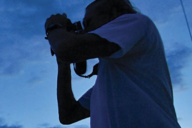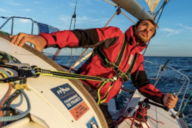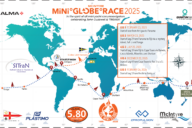Spring and early summer are the foggy months along our coastlines and in the Great Lakes. It has to do with warm air flowing over cold water to form what old Maine lobstermen like to call “humdity.” It can hang over the coast like a still and impenetrable blanket or it can blow in on a fresh afternoon sea breeze and blind you without warning. Either way, fog makes navigation a challenge but radar and AIS help you move your boat in fog more easly and safely. Last summer when leaving Newport, RI for Martha’s Vineyard in a dense, pea soup fog, we encountered no fewer than 32 boats outside the entrance to Narragansett Bay. We saw them on both radar and AIS on the cockpit multihull function display, and we spoke to a couple of them on VHF to arrange safe passage, but we only saw a couple of boats in the flesh. It was eerie. We fetched up on the Vineyard riding the afternoon southwest breeze and, flying blind, we entered harbor, dropped the hook and got settled. We didn’t see the sandy shores of the island until we motored into the village in our dinghy. By late afternoon, the fog had burned off, the sun was shining warmly, and we were able to enjoy sundowners in the cockpit with a fine view of the beautiful island. Years ago, a veteran Maine sailor who knew a lot about fog told me, “Fog is fog. As long as you mind your navigation and radar, keep to the channel and watch for lobster pots, you’ll be fine. After all, they don’t move the islands or the rocks during the winter.”
You Might Also Like
Recent Posts
-
An Insider’s Guide to the South Pacific Minerva Reefs
March 26, 2025 -
Standing Watch, and…Who’s Got the Boat?
March 26, 2025












